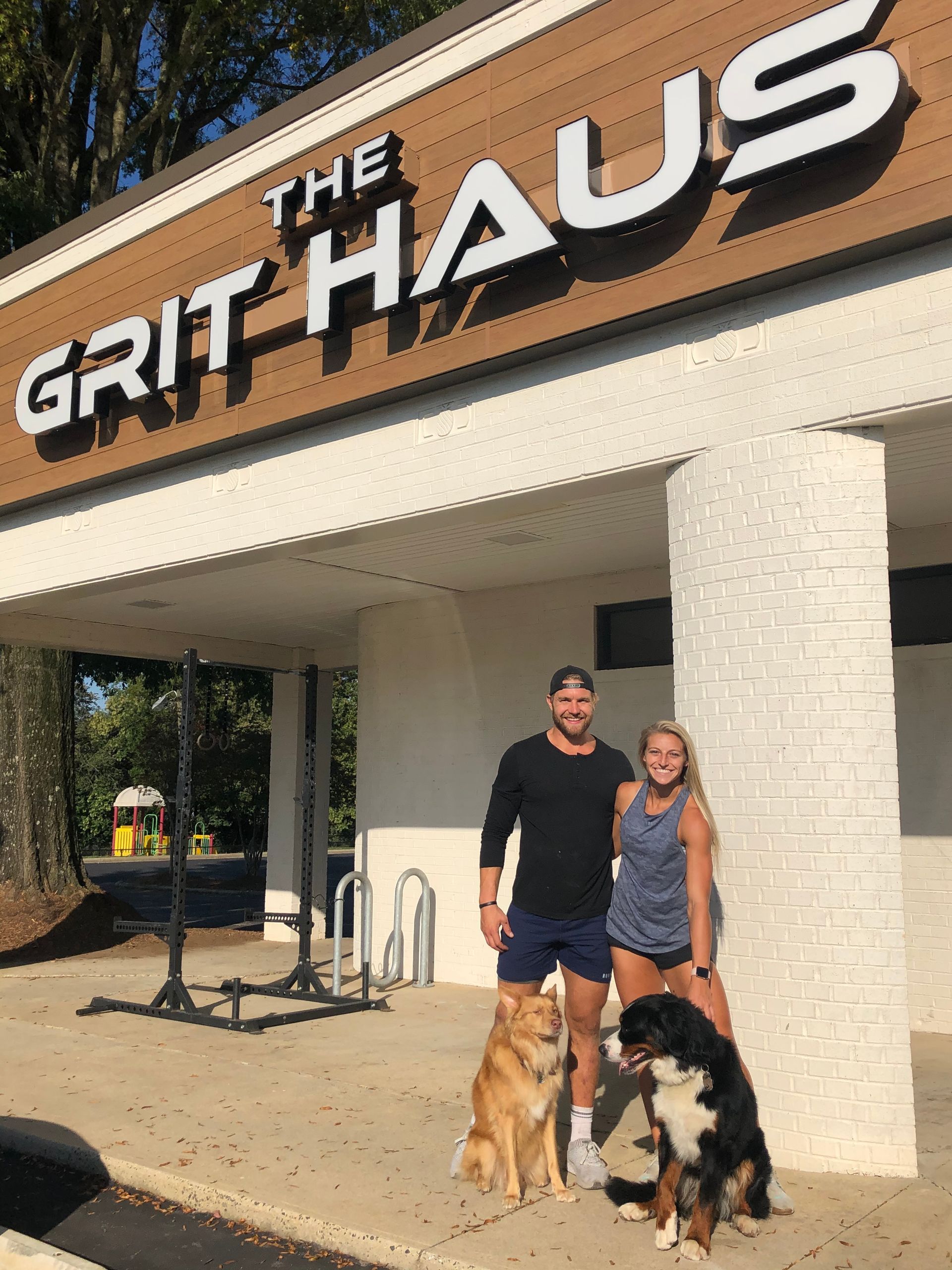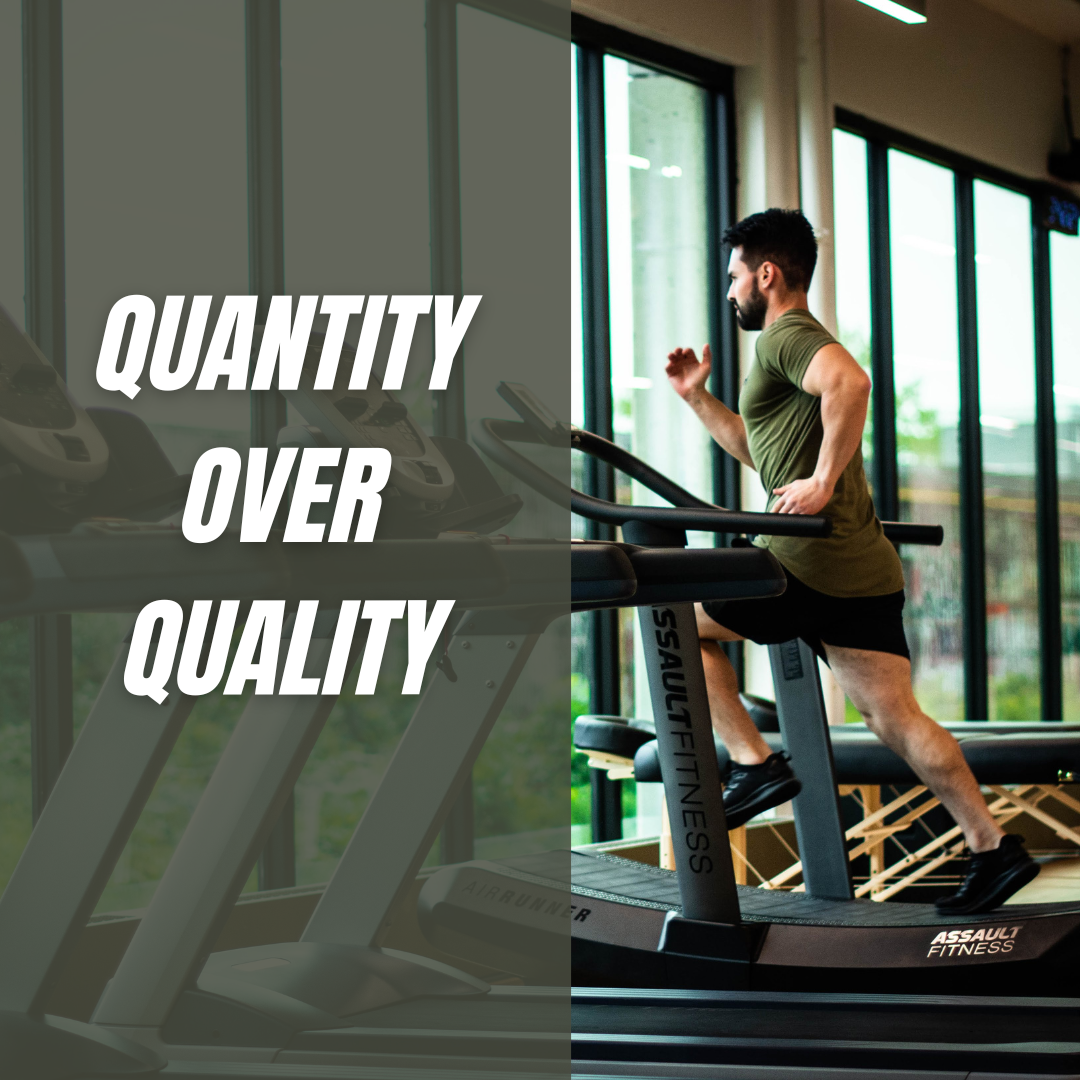By Kevin Steinhaus
•
November 14, 2024
Quantity over Quality? You read that right! You’ve most likely heard the opposite. You’ve probably been told by 99% of your coaches, trainers, PTs, physicians, etc that you should be more focused on quality over quantity while exercising. This has been one of the major principles that I have changed my mind on throughout my career in health and fitness. I have been educated on how to do movement screens to find “dysfunctional movement” and to be relentless as a CrossFit Coach to make sure people are moving perfectly before they add any weight. Trust me, movement efficiency and technique are important but it should not be a barrier for people to start working hard. Quantity—doing more reps, sets, weight, and workouts—in my opinion is more important than perfection in the long run, especially for general fitness. It’s not about allowing people to just do whatever they want in the gym and ignoring technique altogether, but understanding that sometimes, you need to put in the volume and intensity to build the capacity to improve your overall health and fitness. Telling someone who isn’t currently meeting physical activity guidelines to focus on “quality over quantity” is negligent. And even worse, telling your clients/patients that they could or will get hurt if they add intensity before their mechanics are “ideal” can have a lasting impact on them. Using low-level corrective exercises (like squat therapy) for 30+ minutes or spending 30 minutes on mobility to make someone’s movement look “better” might feel satisfying for a coach, but if it comes at the expense of delivering an actual workout that challenges their physical capacity, it’s not in their best interest. The reality is, people love the idea of getting results without working hard. So, clients often get excited about “moving better” from low-effort, minimal-engagement exercises. Sure, any exercise is better than none, but as health and fitness professionals, we play a key role in shaping how our clients view movement and exercise. It’s our responsibility to communicate what truly drives adaptation and progress… STRESS . We have clear data showing the links between health outcomes such as reduced mortality risk and fitness metrics (like VO2 max, maximal running speed, leg strength, body fat %, and fat-free muscle mass). Improving these metrics takes hard work. There’s no shortcut. Even the WHO and CDC guidelines factor in intensity. What you do and how you do it really matters. Bird dogs, deadbugs, or a 30 minute walk won’t cut it. Corrective exercises do have a place, but we shouldn’t let concepts like “movement quality” or “mechanics” create unnecessary barriers to training with intensity or volume. There is a time and place for focusing on movement quality. Clients who are training for performance and who also have the time, energy, and motivation to optimize their movement efficiency and mechanics can afford to spend time doing so. Clients rehabbing might need to start with lower-threshold activities before progressing to higher efforts. But improving “movement quality,” “mechanics,” or “efficiency” should never be an excuse to prevent someone from getting a challenging workout. Movement quality might improve workout tolerance, reduce symptoms of pain, build self-efficacy, or develop healthy exercise habits—but it’s not a reason to avoid intensity. Too many trainers, physicians, chiropractors, and physical therapists have created a culture of fear, suggesting you must have perfect movement patterns, be symmetrical, or have certain prerequisites before you can add intensity or volume. This is nonsense, and it’s damaging to people already hesitant to challenge themselves physically. The truth is, no one’s movement is so “dysfunctional” that meeting physical activity guidelines and training hard should be anything less than our number one priority. In fact, you’d be amazed at how much better someone will move once they start working out more consistently—and with more volume/intensity. Too many people are hesitant to push themselves due to fear of injury or making mistakes. But those mistakes are often part of the process of learning and adapting. In this sense, increasing the amount of work you do might be more productive at times than obsessing over flawless execution at every moment. Strength matters. Aerobic capacity matters. Body composition matters. You can not achieve these if your program or the gym you train at are spending most of the time having you perform low-effort movement and technique work. Majority of your workouts should be challenging! Getting sore or tired isn’t the goal of every workout, but if someone is working out only a few times a week or less, those workouts should push them. Low-frequency clients don’t have time to waste; they need to make every session count. Their training should be challenging and help them maximize the benefits of every moment they have in the gym. I’m not saying you shouldn’t address movement limitations that impact a person’s ability to move freely or perform certain exercises. But it’s absolutely possible to do so without holding them back from high-effort training. I believe this is one key attribute of a good coach/trainer. Can you find a movement that your client/patient/member can perform with some intensity and not just throw a PVC on them and tell them to work on technique for 20 minutes while the other people are getting after it. Choose better exercises that allow people to work hard, despite their current limitations. They deserve to work hard. If people are constantly told they need perfect form to move forward, they might end up stuck in paralysis by analysis, not progressing with enough intensity or frequency. By focusing on quantity—i.e., encouraging people to simply move more, move faster, move heavier weight, and challenge their bodies in varied ways—you allow them to build the resilience, conditioning, and even confidence necessary to refine their technique over time. Kevin Steinhaus





